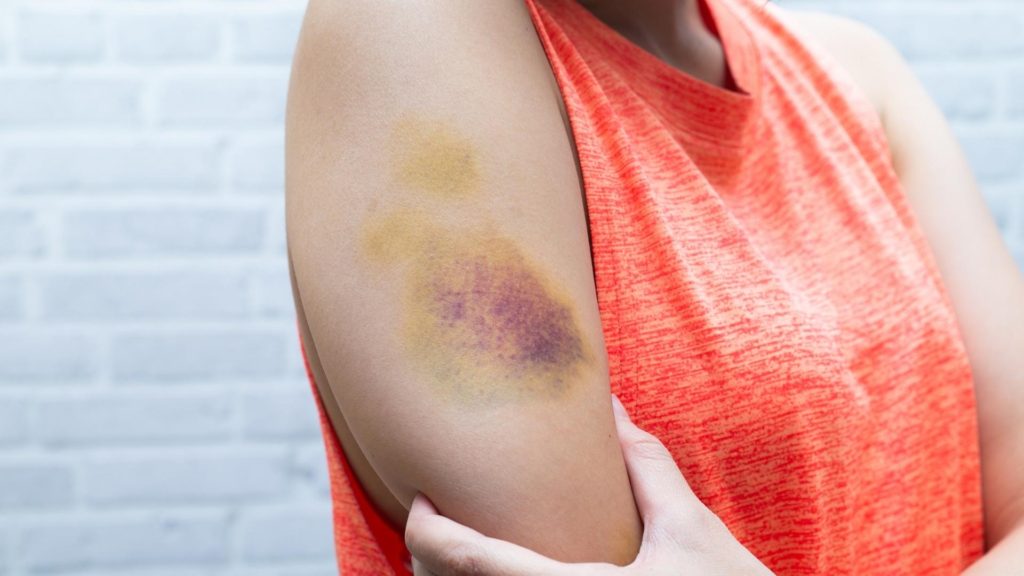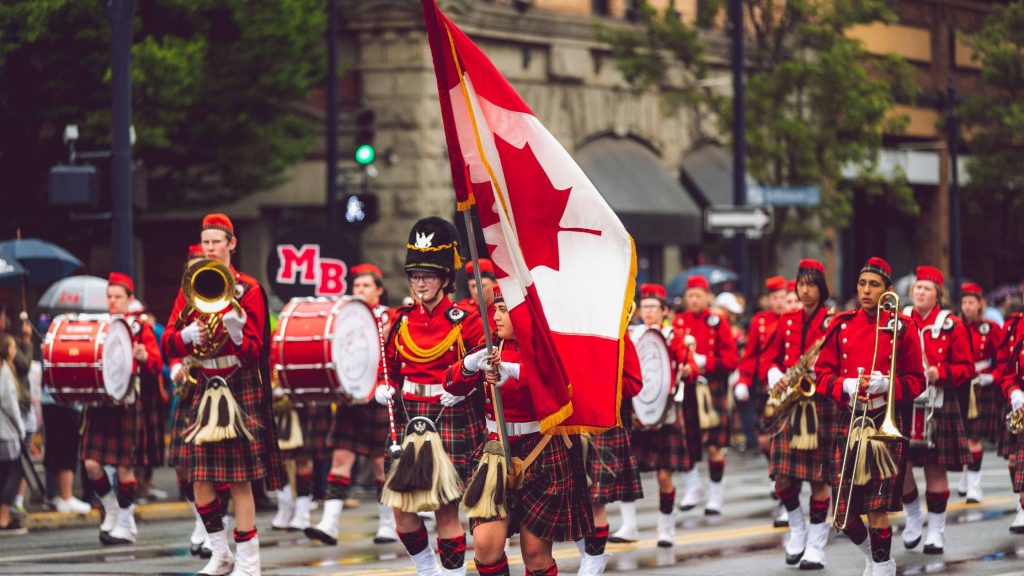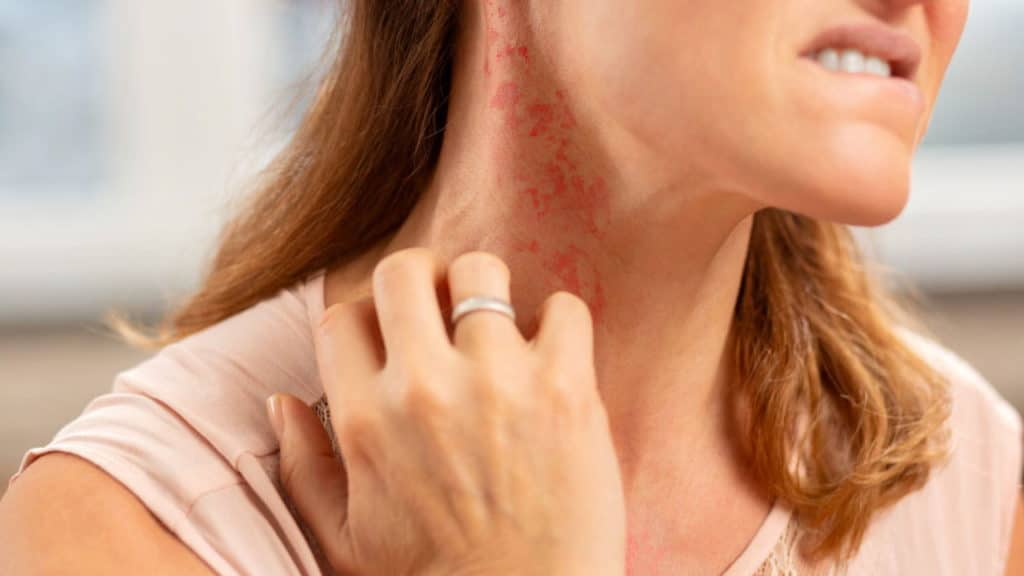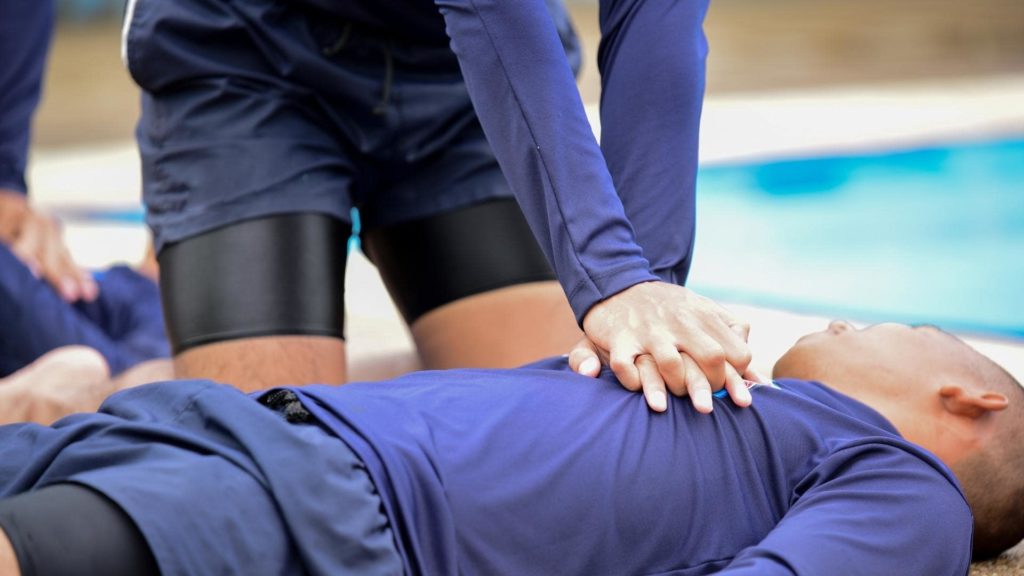As summer is approaching, everyone is preparing to go out in the sun and do various outdoor activities. During such adventures, it’s pretty common to get boxed or even have elbows thrown at you. Later that evening or the next day, you may notice a blue-purple mark on your skin, also known as a bruised area, often accompanied by skin decoloration. Wondering how you got these little souvenirs from the previous days? Bruises are not unusual injuries and are usually the result of trauma. Applying the right methods to reduce swelling can help you recover faster. There’s a chance that you may bruise easier than others. In this blog, we will discuss how to make a bruise stop hurting.
What Causes Bruises?
A bruise usually forms on an area of the skin where you have bumped into something hard or after someone strikes you. The impact damages tiny blood vessels beneath the surface, leading to a bruised area. Bruises can vary in color, but they are usually a black-blue color in the skin, often accompanied by skin discoloration, that gradually fades as they heal. The time required for the bruise to recover is usually about two weeks.
It is normal to have swelling, and the bruise will hurt, especially for the first few days. These symptoms will subside as the bruise heals, and improving blood flow to the area can help speed up the process.
Athletes, weight lifters, and people who exercise vigorously also suffer bruising caused by tears in the blood vessels under the skin. Older people have thinner skin and fragile tissue, and they bruise far easier than younger people.
Finally, people who take medication to thin the blood are also more prone to bruising.
Learn How to Care for Bruises
What Exactly is a Bruise?
Generally, blood vessels break due to the trauma from the injury the skin experiences. The leakage of blood from the small blood vessels in the skin usually results in the discolouration making it blue-purple and is often called bruising. As the body heals, the body slowly absorbs the blood.

How to Care for a Bruise
There are ways to help a bruise heal quicker. If there is also broken skin, you can bandage it after cleaning and applying antiseptic ointment to the wound.
Ice or another cold source can be used to soothe the afflicted region, which will minimize discomfort and reduce swelling. To minimize the chance of freezing, place a cloth, towel, or pad between the ice and skin.
After the initial cold treatment, using a heating pad or warm compress can improve blood flow to the area, speeding up the healing process. Apply the cold source for 20 minutes and then take it off for 20 to 30 minutes, alternating with heat as needed. Continue doing this as long as the individual feels discomfort.
If the individual is in severe pain, can’t move a body part without discomfort, or you suspect a broken bone, bleeding disorders, or internal injuries, call EMS/9-1-1 immediately. Internal bleeding, brain and/or spinal injuries, and bone, muscle, and joint injuries are all possibilities. Treat it as an emergency right away.
To prevent future injuries, wear protective gear during physical activities. Individuals who take blood thinners or have bleeding disorders should take extra precautions, as they are more prone to severe bruising. As the bruise fades, you may notice it changing color, from dark blue or purple to light brown, as part of the natural healing process. These steps can relieve pain and ensure the injury heals properly.
Apply R.I.C.E. in severe conditions
R.I.C.E. stands for rest, immobilize, cool, and elevate, a first aid technique used specifically for strains, sprains, dislocations, or fractures caused by physical trauma. This method is not intended for minor bruises but rather for more severe injuries where stabilizing and managing swelling is critical. Follow these steps during the first two days to promote healing and prevent further injury:
R – Rest
Avoid moving the injured area. Resting helps prevent additional damage and allows the body to begin healing.
I – Immobilize
Stabilize the area using a splint or other support. Keeping the injury still minimizes further harm and reduces pain.
C – Cool
Apply an ice pack or a packet of frozen vegetables wrapped in a towel to the injured area for 10-20 minutes. Cooling reduces swelling and eases discomfort. Do not place ice directly on the skin to avoid ice burns.
E – Elevate
Raise the injured area above heart level to reduce swelling and help drain excess fluid. Elevation also relieves pain by decreasing blood pooling.
Note: If the injury involves only a bruise without sprain, strain, dislocation, or fracture, R.I.C.E. may not be fully applicable. For bruises, focus on cool therapy and gentle care. Always consult a healthcare provider if symptoms worsen or you suspect a severe injury.

When To See A Doctor
Most bruises heal without requiring medical attention, but in some cases, you may need to see a doctor.
- Painful swelling in the bruised area
- Pain that persists three days after a minor injury
- If you have large or painful bruises on the back, face, or trunk developing for no reason
- Have a history of bruising, bone bruises, or significant bleeding when injured or during surgery
- If a lump (hematoma) forms over the bruise due to trapped blood
- Have abnormal bleeding from your gums or nose
Some of these signs indicate something more serious, such as unusual bleeding or a problem with blood clotting, where blood leaks excessively from blood vessels or blood pools under the skin.
Seek the help of your doctor if you notice unexplained bruises, as they may indicate anemia caused by a lack of iron. Blood tests may be necessary to determine if there is an underlying condition.
Finally, many homeopathic remedies can assist the healing of bruises, including arnica, bromelain enzymes, aloe vera, vitamin K, and vitamin C. Applying an ice pack in the initial stages of injury can also reduce swelling and provide relief.
Learn about Wound Care in First Aid & CPR Training
First Aid & CPR training teaches you how to deal with emergencies, including the guided steps to follow for treating bruises caused by sports injuries, a major fall, or even a car accident. Join our various First Aid classes at Coast2Coast, and become a Canadian Red Cross certified First Aider.
Whether you need mandatory First Aid training or just want to help others, First Aid training ensures you never feel helpless in any situation. The course includes CPR training for breathing and cardiac emergencies, as well as practical techniques to reduce pain and care for an injured spot.
You can take First Aid in several locations around the GTA, Western Ontario, and Eastern Ontario. Choose the level required by your workplace or preferred by you, and join a First Aid course at Coast2Coast today. Once completed, you will have the skills and confidence to contribute to the safety of the people in your home, workplace, and community. You will also learn how to effectively care for bruises and understand why certain diseases may cause some individuals to bruise easily.




















